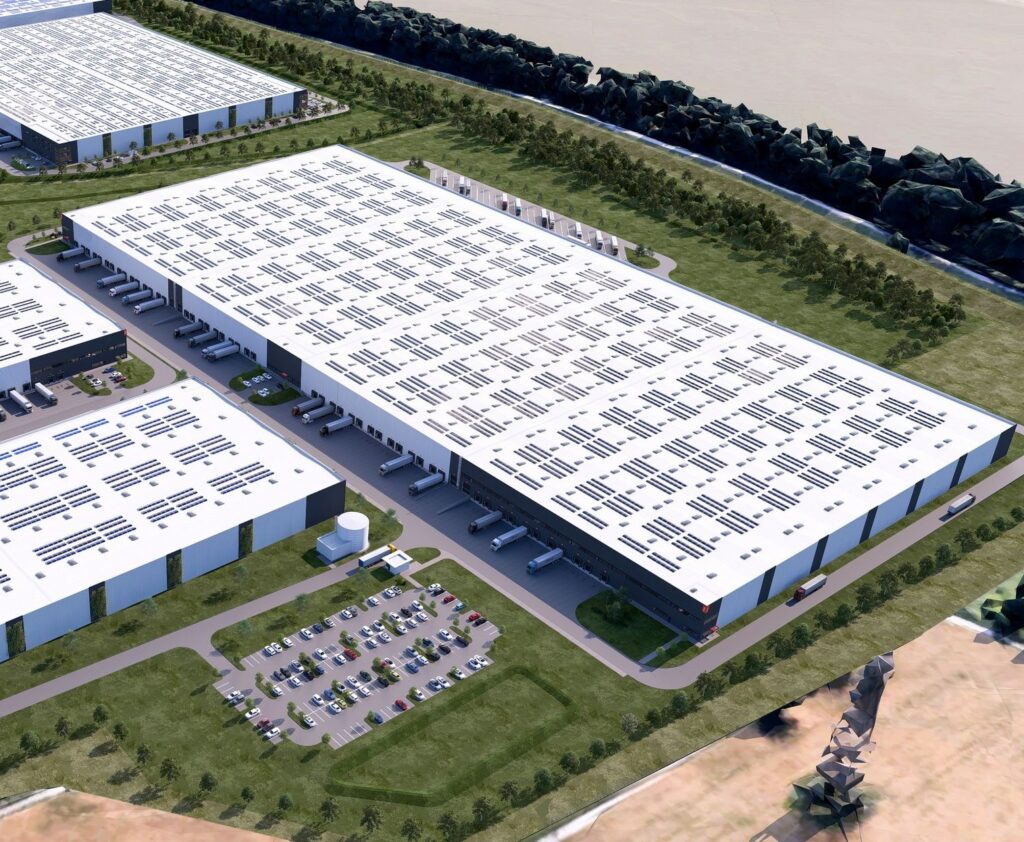South London’s Croydon to unveil £30m regeneration plan
Croydon, in south London, will unveil a £30 million vision and growth plan on 19 June, outlining a bold strategy to accelerate regeneration, attract investment, and position the borough as a driving force in London’s post-pandemic economic revival.
The plan — to be presented by executive mayor Jason Perry — is the first local growth programme in the capital to align with the Mayor of London’s broader growth strategy. It outlines Croydon’s ambitions to become “London’s flagship destination for the experience economy”, with a focus on culture, creativity and innovation. The town centre has been identified as a regionally significant office cluster, while 14,500 homes are either consented to or included in the borough’s Local Plan.
“This is a borough on the rise,” Mayor Perry said during a preview of the plan at BOXPARK Croydon earlier this month. “Croydon as a brand means business. Croydon is ready.”
Backed by more than £1 billion already flowing into the borough from public and private sources, the strategy builds on momentum from significant national funding, including levelling up and creative enterprise zone programmes. The plan identifies housing-led development, commercial growth and cultural expansion as priority areas for delivery.

A key element is Croydon’s renewed partnership with global property group Unibail-Rodamco-Westfield to reimagine central Croydon, where a long-anticipated redevelopment is being revived. The borough has also signed an economic charter with London Gatwick — just 14 minutes away by train — to boost skills, unlock jobs and drive long-term growth.
Croydon’s creative economy is another central pillar, with the borough now home to more than 4,800 creative businesses — more than in Manchester, Leeds or Birmingham.
According to the new plan, “Croydon has been identified as London’s flagship destination for the experience economy, celebrating its unique blend of culture, creativity, and innovation.”
In 2024, the borough reported the fastest micro-business growth in London, up 24%, and the third fastest across the UK, further reinforcing its credentials as an emerging entrepreneurial hub.
“We’re not waiting for change,” said Mayor Perry. “We’re making it happen.”
The plan will be formally presented to prospective investors at a private briefing on 19 June, organised by Develop Croydon. This not-for-profit body promotes regeneration and inward investment in the borough.
ANALYSIS: Croydon has long been seen as a London borough with potential. With its fast rail connections to the City of London and Gatwick, a young and diverse population, and a strong creative scene, the ingredients for success have been in place for years. Yet the town centre — symbolised by the stalled redevelopment of the Whitgift Centre — has too often disappointed both residents and investors.
Now, however, a new strategy and a reset in approach suggest the dial could finally be shifting. A refreshed Growth Plan, to be unveiled by Executive Mayor Jason Perry on 19 June 2025, sets out a vision for Croydon as a place to “live, work, invest and grow”. It combines town-centre regeneration with industrial expansion and a focus on culture and placemaking — grounded in the recognition that previous plans were too retail-heavy and failed to adapt to changing economic conditions.
The Whitgift Centre stands as the most visible reminder of missed opportunities. Once a flagship shopping destination in the 1980s and 1990s, it fell into a long decline as the retail market shifted and redevelopment plans became mired in delay. Hammerson — a UK-based retail property investor — and Westfield — a global shopping centre operator and part of the French-listed Unibail-Rodamco-Westfield (URW) group — were originally selected as joint developers in 2012. A £1.4 billion redevelopment scheme was granted planning permission multiple times between 2013 and 2017. However, the closure of Debenhams — which entered liquidation in 2020 — and the withdrawal of Marks & Spencer from the site, alongside wider turmoil in UK high-street retail, pushed the scheme into limbo.
In 2023, URW acquired Hammerson’s stake and took complete control of both the Whitgift and Centrale shopping centres. The company is now advancing a mixed-use redevelopment that is better suited to current market realities, focusing on housing, flexible workspace, public realm improvements, and cultural uses. Construction is not expected to begin until 2028, but the strategy marks a shift away from speculative retail-led plans and toward more integrated urban development.
Croydon Council’s new growth narrative places these efforts at the heart of a broader repositioning. The borough is now explicitly targeting four economic clusters: culture, creative industries, sustainable logistics, and health and social care. There are around 4,800 creative businesses based in Croydon today. The local cultural ecosystem — anchored by Fairfield Halls (a major arts venue), Boxpark (a pop-up retail and food destination), the BRIT School (a renowned creative arts college), and a growing live music and video art scene — offers real placemaking potential. New commercial workspace is also in development to help Croydon retain its younger, mobile workforce.

On the industrial side, the Purley Way corridor is earmarked for expansion. Located near both the M23 and Gatwick Airport, it forms a natural logistics hub for Greater London and continues to see demand from e-commerce operators and light manufacturers. Croydon is also exploring improved public transport links, including a potential Tramlink extension, better to integrate outlying zones into the borough’s economic core.
But the path to regeneration remains challenging. The council is still recovering from its Section 114 bankruptcy notice issued in 2020, and public trust is fragile. There is also the risk that large-scale plans falter or that rising construction costs and weak retail returns deter long-term investment. While URW’s involvement brings institutional backing, scepticism lingers after more than a decade of stalled progress.
Nonetheless, Croydon’s fundamentals remain strong. It is one of London’s most populous boroughs and has been designated an “opportunity area” by the Mayor of London, with capacity for over 14,000 new homes and 10,000 jobs in the town centre alone. East Croydon station — used by approximately 26,000 passengers daily — provides fast links to London Bridge, Victoria, and Gatwick in under 15 minutes.
While most of the borough lies in Zones 5 and 6, parts of Croydon — including Thornton Heath — fall within Zone 4, making it relatively affordable compared with inner London areas and offering a compelling live-work proposition for both residents and employers.
The combination of revised development plans, more realistic delivery timelines, and a diversified economic strategy gives Croydon its best chance in over a decade to reset its story. If delivery matches the vision, the borough could finally move beyond its reputation as a “nearly place” and emerge as a dynamic, mixed-use hub aligned with the needs of modern London.



